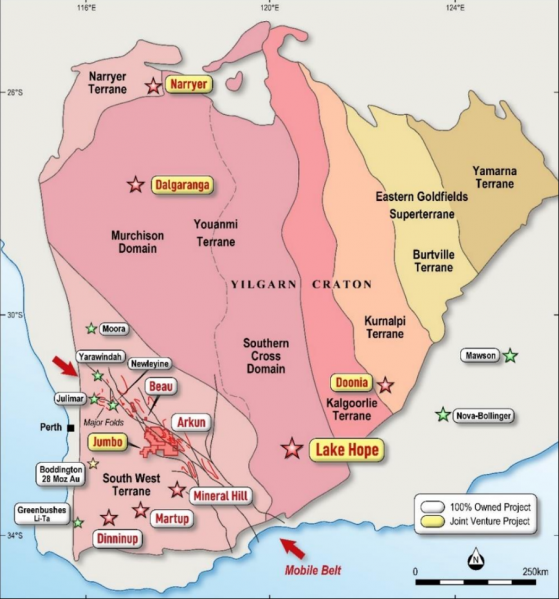Impact Minerals Limited (ASX:IPT) is closing in on a large rare earths anomaly at its Arkun Project in WA’s southwest, strengthening its critical minerals footprint in an emerging REE province.
While it’s still early days, the soil geochemistry anomaly is thought to measure around 10 kilometres long and 2 kilometres wide, hosting light and heavy rare earth elements — minerals that can be found in everything from batteries to magnets.
Impact’s new name for the anomaly is the Horseshoe prospect — a sign that it’s feeling lucky about its chances in this prime rare earths location.
Not one to put all its eggs in one basket, however, the company is moving ahead with surveys on REE (and other metal) targets, as identified during roadside soil geochemistry work.
The geos are also on deck interpreting nickel, copper, platinum group metal and lithium soil geochemistry data, synthesising drill targets for a maiden campaign.
WA’s southwest is shaping up as an emerging mineral province.
REE province in the making
Impact Minerals managing director Dr Mike Jones said Horseshoe was an exciting REE prospect given its association with an intrusion next to a major fault zone.
“The area is also very weathered, so there is also the potential for REE ionic clay deposits,” he explained.
“We are looking forward to getting our follow-up fieldwork underway to check this.”
Given Horseshoe is just one of several REE anomalies at Arkun, Dr Jones is looking forward to seeing results from infill soil surveys.
“This and other recent discoveries in the region suggest that southwest Western Australia could also become an REE province like the Gascoyne Province and the Albany-Fraser Belt near Esperance. We are happy to have such a significant ground-holding in this region.
“We are also interpreting the soil geochemistry results for nickel-copper-PGM and lithium and look forward to announcing those results when completed.”
Where to from here?
Horseshoe is slated for follow-up work next quarter, with plans to hit the ground running with field checking and rock chip sampling.
Beyond the project’s rare earths potential, Impact plans to collect around 1,000 samples and test areas with critical mineral hallmarks.
The explorer is also winding back the clock, reprocessing 2022 HeliTEM survey data over priority target areas in the hunt for nickel, copper and platinum group metal mineralisation.
A deep ground penetrating radar (DGPR) survey has also been conducted at the nearby Beau prospect, where Impact is weighing the potential for lithium pegmatites.
In an effort to optimise mapping for nickel and lithium, Impact has engaged fellow ASX-lister SensOre Ltd (ASX:S3N) to help reprocess its HeliTEM data.
SensOre will apply its artificial intelligence and machine learning algorithms to the datasets, enabling it to ‘fingerprint’ and predict where a mineral deposit might be.
Suffice to say, the data collation efforts will provide a strong foundation for Impact’s maiden Arkun drill program, slated to begin in late 2023 or early 2024, depending on the harvest season.
Read more on Proactive Investors AU
